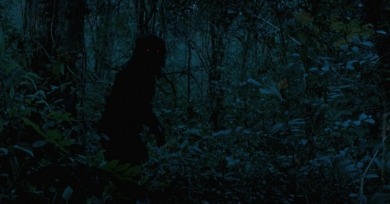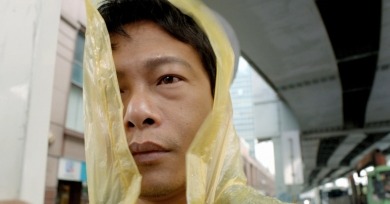Best of the Decade: The Return
Malick’s filmmaking, especially here and in everything after, strikes me as a way of using the cinematic form to piece together a visual approximation of a world made unknowable by our own perceptions, our own human limitations.
To survive means one has to keep surviving, to bear the anguish of what in some ways can never be escaped, until one can do it no longer. Surviving is what we see mother and daughter doing for each other in No Home Movie, though it also pains and consumes them.
There is no privilege accorded to one state of being over another. All of these figures exist within the same frame of Apichatpong’s cinema. And, importantly, to his characters, all are equals.
So clouded is she by the metrics of corporate progress and ladder-climbing that basic human feelings come to sound like advertising jargon. By this logic, human lives themselves lose significance, allowing cruelty to go unchecked under the guise of economic efficiency.
Lancaster is the type of deeply flawed, selfish man with too much power who led the latter half of the 20th century astray, and remains at the top well into the 21st. He is the past, our horrible present, and even worse, the future: a time-traveler of the most diabolical variety.
Her fourth feature contends with colonialism at the level of the text, dramatizing the very origins of the malaise the infects the contemporary milieus of her previous features.
Carax envisions life as an endless state of unpredictable flux. We can’t help but transform depending on who we’re with and which spaces we enter, on-screen or off-. Taking escapism to its limit, it’s impossible to reconcile the “real” self with the “role.”
Cameraperson neither goes out of its way to remove traces of the maker nor takes her as subject exactly, but acknowledges the idea that the camera is an extension of a particular human being, and that the images before us are indelibly imbued with her perspective and presence.
We know these kinds of cinematic images, because they’re usually used as fillers—the musical entr'acte, the pause between two actions—but in Boyhood they channel both Mason’s unique experience and the film’s greater ambition of recording (a) lifetime.
The revolt that Alma initiates can be read as Anderson’s response to cinematic texts like Rebecca and Vertigo—what might have transpired if Madeleine hadn’t let Scottie use clothing as a weapon to exert control. Phantom Thread is what happens when the mannequin comes to life.
The more completely you excavate the personal, the more impersonal it becomes. This is because the technical skill required to represent interiority with such a fine grain is fundamentally exterior.
Jenkins, who often cites his early influences in the films of Claire Denis, Wong Kar-wai, Hou Hsiao-hsien, and Lucrecia Martel, builds the narrative not through plot points, but through a pervasive dance between feelings of pressure and release.
More than an exercise in how to evade censorship, This Is Not a Film is also a film essay, of sorts. It interrogates the essence of cinema, and poignantly shows how a film experience transcends its purely technical means.
Did and didn’t. The truth hides somewhere in that collision of being and non-being, always just out of reach. She is Miller's muse, and She isn't his muse. The revelation is a deception is a revelation is a deception, ad infinitum.
This instability of place seems oddly appropriate for an artist who has been, in the decades of the new century, as seemingly adrift as the medium itself.
Haynes is a brilliant, sometimes cerebral filmmaker who can nevertheless make us feel to our core the desperate isolation and the constant threat to the self that society imposes on those it casts in the role of Other.
The genre of the film, so to speak, is not naturalism but an imitation thereof. Strung together by conversations without cadence, and shot with an unbridled camera, the film is made up of small scenes, each spilling into the next.
Watching the film just six years after its late 2013 release already feels like putting on a favorite record that time has sharpened and warped, as time and folk records are designed to do. It was never new and it never gets old.
Ozu used to say, “It is the films that watch us.” For Kiarostami, the work and its audience are one and the same: the artist expresses a vision and the audience captures and—by its plurality—multiplies it.
It is the rare film openly built on the legacy of its forebears that has gone on to influence a wide variety of European art-house cinema.
Appropriately enough given the wending paths of its volatile teenage heroine, the film occupies a state of arrested transformation, as if on the cusp of an epiphany that never quite arrives.
No matter how much things change, movie love remains; it is always regenerating, refreshing, being passed down to new lovers.





















